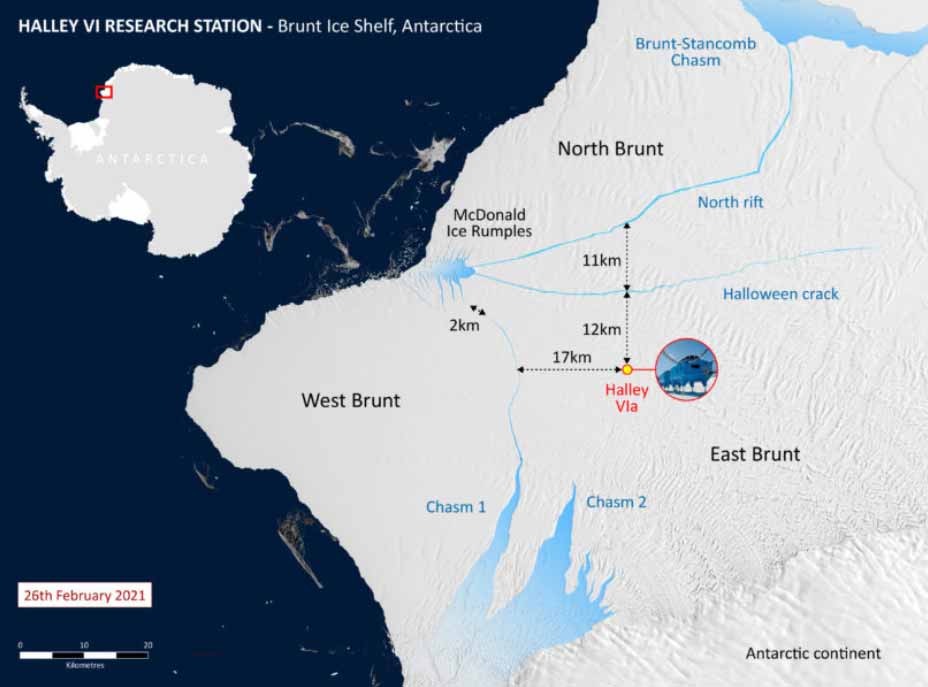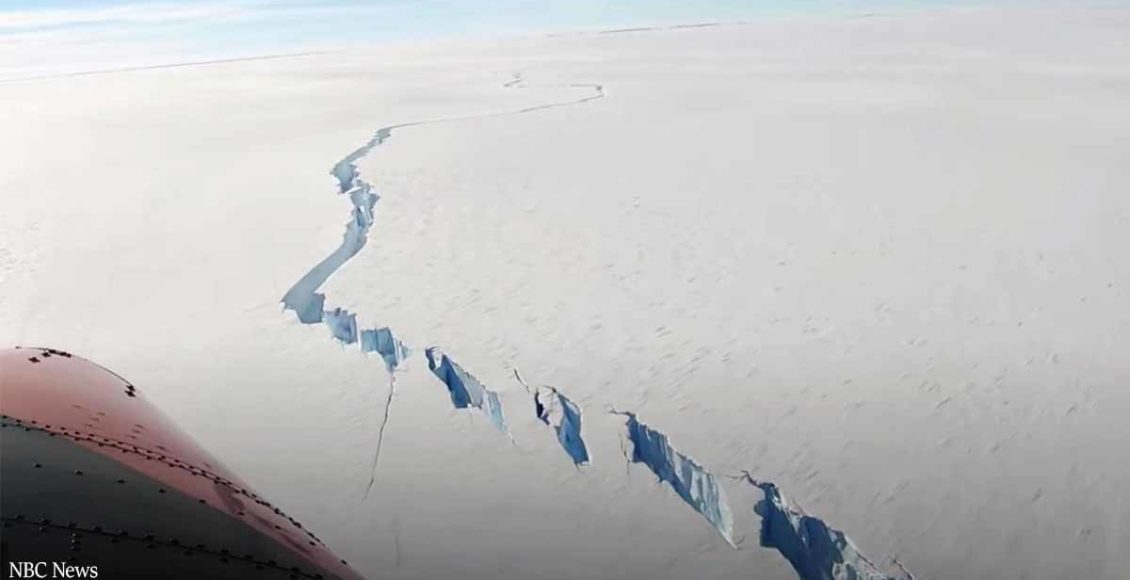A giant iceberg bigger than New York City broke off the Brunt Ice Shelf in Antarctica.
- A 1270 km²(490mi²) iceberg broke off in Antarctica on Friday morning.
- British Antarctic Survey (BAS) scientists have been expecting this for almost a decade after they first detected growth of vast cracks in the ice.
- BAS Director of Operations Simon Garrod states: “This is a dynamic situation.”

On Friday, the British Antarctic Survey (BAS) alarmed that a 1270 km²(490mi²) chunk of iceberg broke off the Brunt Ice Shelf in Antarctica. As per CNN, BAS stated that the massive piece of freshwater ice broke free in a process called calving – a form of sudden ice disruption.
According to the Environment Research Council, scientists have been expecting a large iceberg to break away for nearly a decade. That was due to vast cracks in the 150-meter-thick floating ice shelf.
Brunt Ice Shelf calves along North Rift chasm – A 1270 km² #iceberg has broken off the #BruntIceShelf.#HalleyVI Research Station is closed for the winter and unlikely to be affected.
Full story: https://t.co/l13QrWdnB0
📽️ #NorthRift, #Antarctica, 16 Feb 2021, @BAS_News pic.twitter.com/QyNt7sVOzT
— British Antarctic Survey (@BAS_News) February 26, 2021
Additionally, in November 2020, a new gap called the North Rift started moving toward another large chasm. Only two months later, it grew a kilometer a day.
An aerial video shows the chilling growth of the North Rift.
BAS stated that on the morning of 26th Feb, the crack widened several hundred meters in only a few hours. As a result, the iceberg was released from the rest of the floating ice shelf.
Director Jane Francis said in a statement:
“Our teams at BAS have been prepared for the calving of an iceberg from Brunt Ice Shelf for years. We monitor the ice shelf daily using an automated network of high-precision GPS instruments that surround the station, these measure how the ice shelf is deforming and moving. We also use satellite images from ESA, NASA and the German satellite TerraSAR-X. All the data are sent back to Cambridge for analysis, so we know what’s happening even in the Antarctic winter, when there are no staff on the station, it’s pitch black, and the temperature falls below minus 50 degrees C (or -58F).”
She continued:
“Over coming weeks or months, the iceberg may move away; or it could run aground and remain close to Brunt Ice Shelf. Halley Station is located inland of all the active chasms, on the part of the ice shelf that remains connected to the continent. Our network of GPS instruments will give us early warning if the calving of this iceberg causes changes in the ice around our station.”

Furthermore, the BAS Director of Operations Simon Garrod said:
“This is a dynamic situation. Four years ago we moved Halley Research Station inland to ensure that it would not be carried away when an iceberg eventually formed. That was a wise decision. Our job now is to keep a close eye on the situation and assess any potential impact of the present calving on the remaining ice shelf. We continuously review our contingency plans to ensure the safety of our staff, protect our research station, and maintain the delivery of the science we undertake at Halley.”



